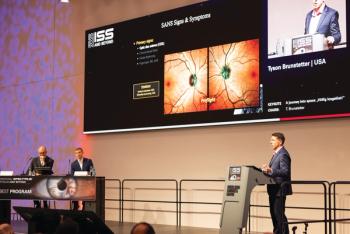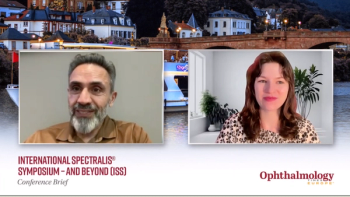
Slit-lamp biomicroscope workhorse tool for infectious keratitis diagnosis
Advanced imaging modalities can aid in the diagnosis of infectious keratitis, but slit-lamp biomicroscopy is still the cornerstone for patient evaluation, said Dr Elmer Y. Tu.
“The slit-lamp biomicroscope is our most powerful imaging tool for diagnosing infectious keratitis,” said Dr Tu, professor of clinical ophthalmology and director, Cornea Service, Illinois Eye and Ear Infirmary, University of Illinois College of Medicine, Chicago. “The clinical evaluation begins with its use, and it is the basis for deciding whether additional imaging is needed.”
Confocal microscopy is the gold standard for diagnostic imaging in infectious keratitis, but optical coherence tomography (OCT) is usually turned to next because of its greater availability, Dr Tu added.
Characteristic clinical presentations
Using the slit lamp, clinicians may determine the causative pathogen of infectious keratitis by determining the organism’s growth pattern within the cornea and other unique clinical signs. “Based on slit-lamp appearance alone, most clinicians can differentiate between bacterial and Acanthamoeba keratitis,” Dr Tu said. “Identifying fungal keratitis based on clinical presentation alone can be a little more difficult, particularly if the patient has been put on a topical corticosteroid.”
Describing the different types of infectious keratitis, Dr Tu said that bacterial keratitis typically presents with a small, superficial solitary lesion involving the epithelium.
“The appearance is similar to that of a bacterial culture on agar,” he noted, adding that there may also be inflammation with or without hypopyon.
With fungal keratitis, both inflammation and necrosis are minimal initially. Characteristic features include a central nidus of growth with branching filaments, a translucent, raised “frosted-glass appearance,” satellite lesions, and endothelial plaque. Also, IOP tends to be elevated.
“The branching filaments grow upward, creating punctate ‘on-end’ opacities and adding to corneal contour,” he said. “I teach residents that if the cornea looks thicker, think about fungal keratitis because it is the only infectious modality that adds to the corneal contour.”
The finding of pigment within a corneal ulcer suggests fungal etiology until proven otherwise- pigmented fungal species include Curvularia, Cladosporium, Acremonium and Exserohilum. Absence of pigment, however, does not rule out pigmented fungus as the cause. Sudden onset or worsening of hypopyon may be a sign that the hyphae have grown through Descemet’s membrane. “The latter is a common finding in Fusarium keratitis, and it will lead to intraocular inflammation and possibly an endothelial plaque,” Dr Tu said.
In cases of Acanthamoeba or herpetic keratitis, the corneal is fairly intact. The lesion presents with a smooth firm bed, there is mainly an infiltrative pattern of proliferation, and epithelial cysts, radial neuritis, ring infiltrates and ulceration can develop.
Clues to the cause of infectious keratitis can also come from paying attention to tactile feedback while obtaining a sample for microbiological evaluation. Because of the necrotic bed with a bacterial ulcer, clinicians will perceive corneal pliability while performing corneal scraping, whereas with fungal keratitis and infections caused by atypical mycobacteria, the rough corneal bed creates a gritty feel. When scraping the cornea in cases of Acanthamoeba disease, the instrument feels like it is skating over ice because of the smooth firm bed, Dr Tu said.
Disclosures:
ELMER Y. TU, MD
E:
This article was adapted from Dr. Tu’s presentation during Cornea Subspecialty Day at the 2018 meeting of the American Academy of Ophthalmology. He has no relevant financial interests to disclose.
Newsletter
Get the essential updates shaping the future of pharma manufacturing and compliance—subscribe today to Pharmaceutical Technology and never miss a breakthrough.













































